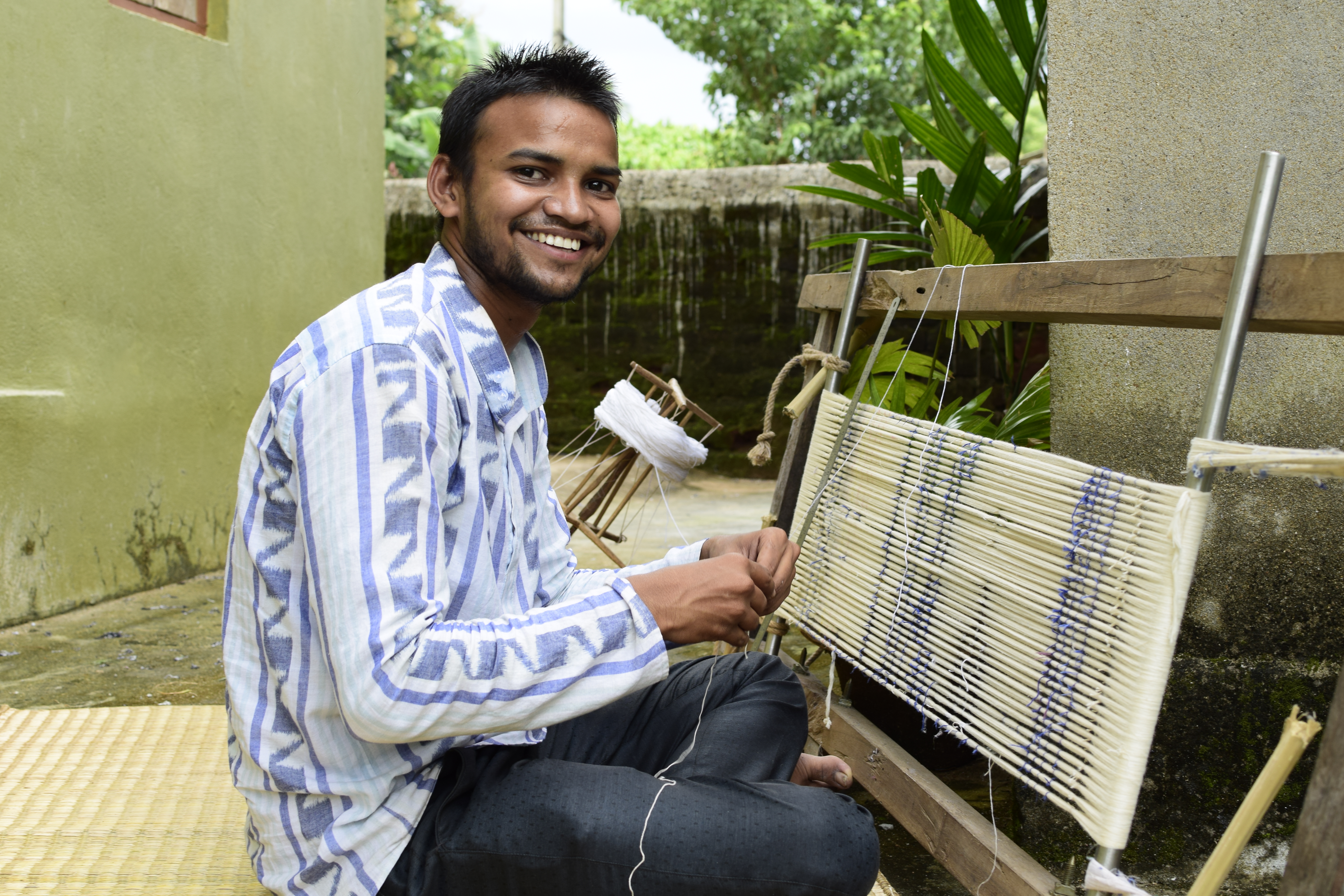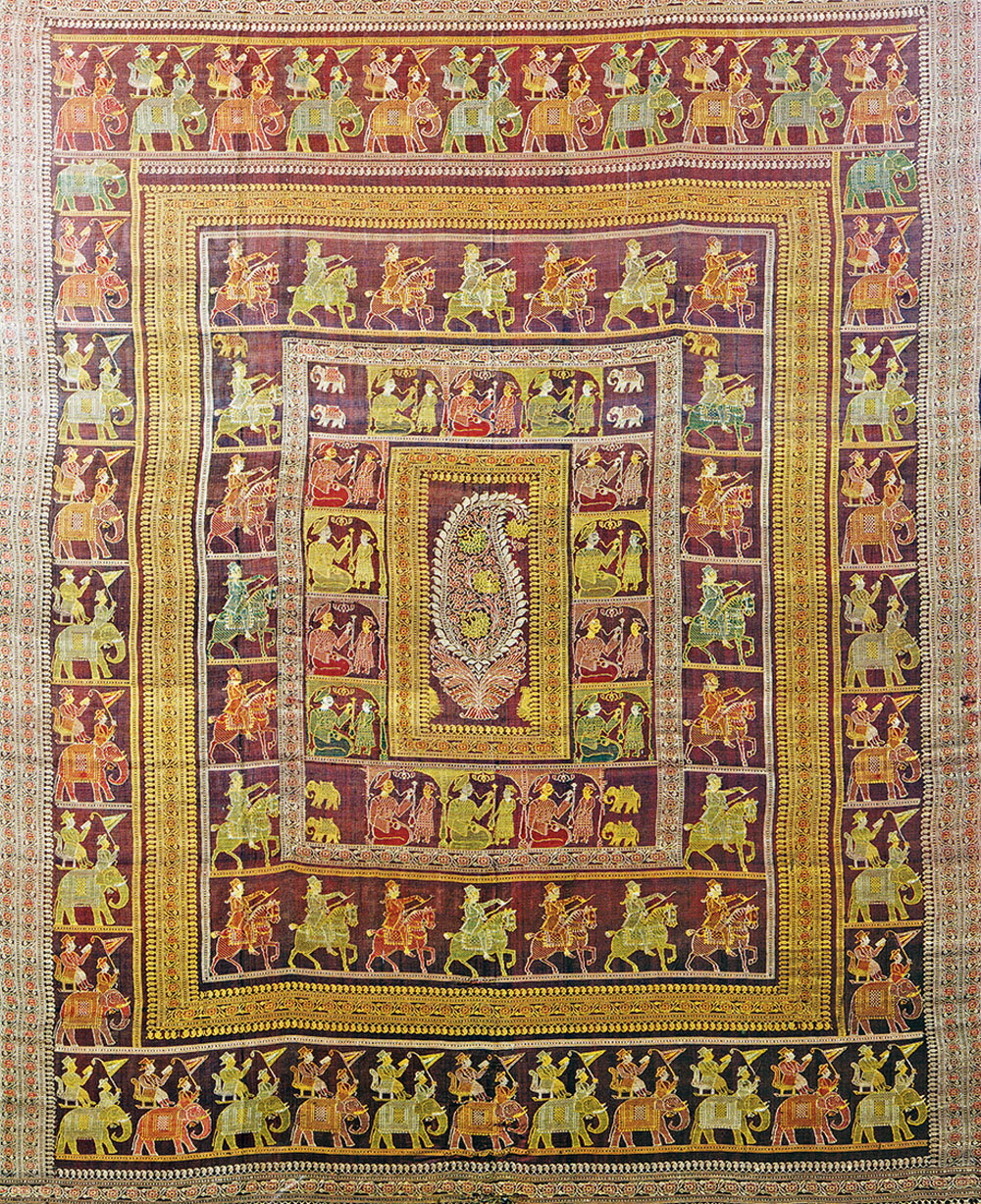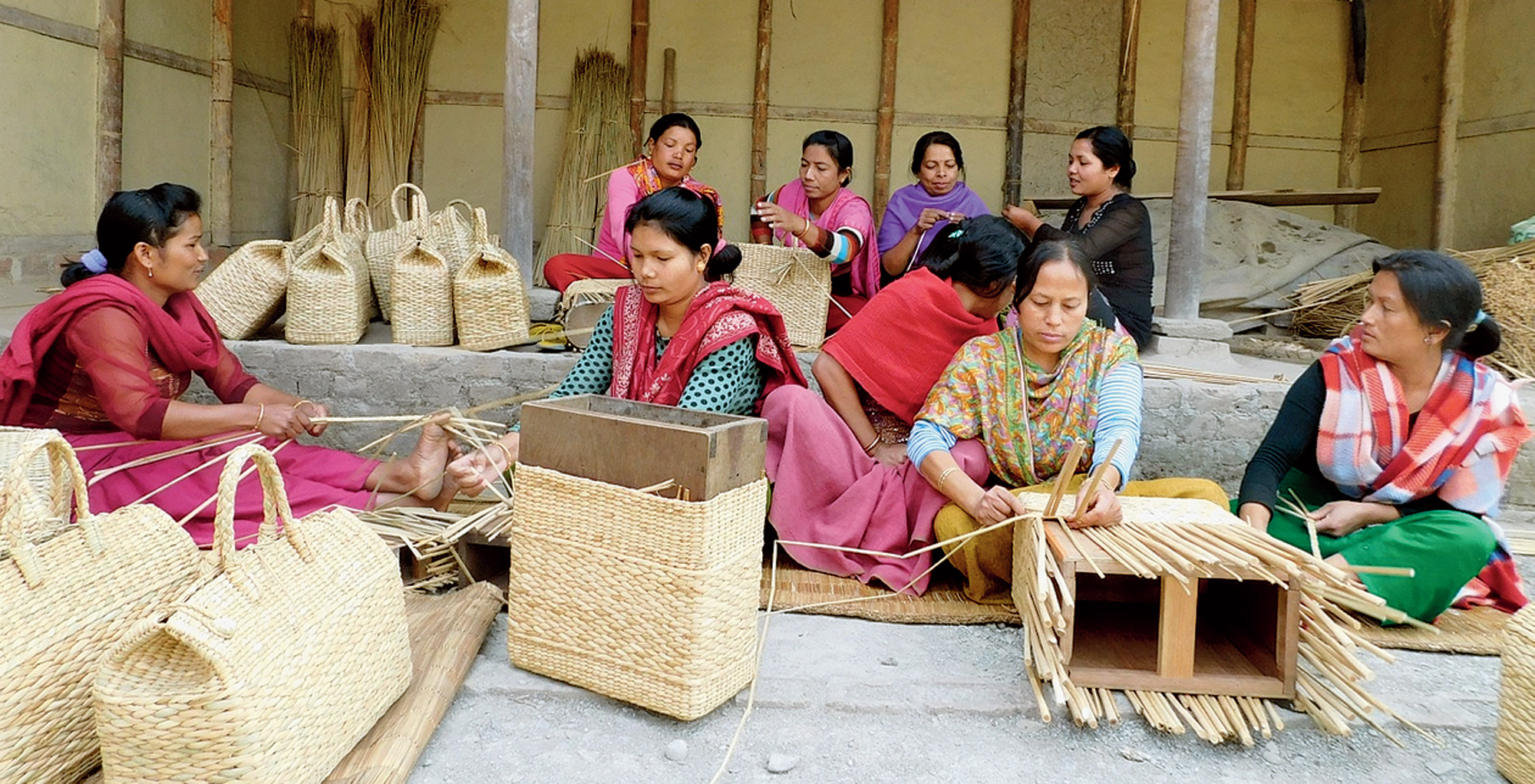24-year-old Abinash Naha who belongs to a family of weavers in Odisha’s Cuttack district gave up weaving and took up a job as a salesperson for water purifiers. It was his curiosity that took him to the Antaran incubation centre in his village in Maniabandha. “When they explained to me that I could connect with buyers online and sell directly, that made a lot of sense to me,” says Naha who has gone back to weaving. With the help of Antaran he has set up a brand called Kera and has a presence on both Facebook and Instagram. “I interact with buyers on whatsapp,” says Naha who carried stock worth a couple of lakh to India Fashion Week. Naha now has half a dozen weavers working under him.
Under the craft-based livelihood programme, Tata Trusts only looks at projects which are commercially viable and where the viability can be translated into remunerative livelihoods for the artisans. The handloom sector ticked both the boxes. “Handlooms have an upper edge when it comes to bespoke designs in shorter runs. Unlike in a mill, on a loom a design can be changed after every two and a half meters without incurring any additional cost,” explains Gautam. Moreover, power looms cannot work with natural fibers of finer counts, especially if they are handspun and naturally dyed. “There is too much variation in the end product which works if the end product is in smaller quantities but not for the massive quantities that power looms produce,” adds Gautam.
Also, connecting weavers directly to the buyers results in a quantum jump in their income. “The weavers’ own reputation is at stake and their involvement increases,” says Gautam. Of course, cutting out the middlemen helps the weavers immensely.
The handloom project that was conceptualized a few years ago but started operations only last year has shortlisted four states – Andhra Pradesh, Odisha, Assam and Nagaland -- where six clusters have been identified. Currently Maniabandha in Odisha, Dimapur in Nagaland and Kamrup in Assam are operational. Next year three more clusters will be added in Venkatgiri in Andhra Pradesh, Jajpur-Gopalpur in Odisha and Nalbari in Assam respectively.
Antaran has also set up a Youtube channel called Antaran Knowledge Centre where classroom videos are uploaded. “These videos are shared with artisans in neighbouring clusters and then our team visits them periodically and if artisans have doubts then those can be clarified,” says Gautam.
So for instance, in Nagaland, Antaran is investing in the cultivation of tree cotton that grows only in the hills and gives a very different texture. The first lot will come in by 2022. “In Nagaland, they had moved completely into acrylic so the shift was required. Right now the cotton is coming from Assam but we want to rejuvenate the core Naga cotton.”
While Antaran started as a project funded completely by Tata Trusts, Microsoft has recently come on board both as a funding as well as a knowledge partner.
By the end of the month Antaran will launch an app called Craft Exchange that will connect artisans and buyers. “As a buyer I can float an enquiry on the app. Supposing I put the location as Odisha then all the artisans in Odisha will get a notification. Different artisans can respond and the buyer can then choose. There will also be a timeline. If the artisan is delaying the order we will get a notification and we will follow it up. We feel once we have done it for 5-6 orders, the artisans will get used to it and deliver on time,” explains Gautam. He says one of the biggest complaints buyers have about dealing directly with weavers is that they are not professional and don’t deliver on time. Gautam feels this app will change that.
Every day Namita Das wakes up at the crack of dawn, completes her household chores and leaves for the Antaran incubation and design centre that opened in her village in Kamrup, near Guwahati in Assam a few months ago.
Das who is in her late-30s has been weaving the traditional Assamese weave since she was a teenager. But she always wove it for herself. “I wore what I wove. It never struck me that I could actually sell it,” she says. At Antaran, a Tata Trust initiative, she was taught colour combinations, newer designs and was put in touch with buyers. “When I first started going to the centre my husband objected. He didn’t like me stepping out of the house. But now that I am earning, he appreciates my work,” says Das who was thrilled to be in Delhi last month to meet buyers at the India Fashion Week, as part of an Antaran initiative.
Antaran is a key intervention of the Tata Trusts’ craft-based livelihood programme, initiated to bring seminal changes in the development of the crafts sector. It aims to rejuvenate ailing handloom clusters through an end-to-end programme where weavers are not only educated on design but also on business in order to empower them. Entrepreneurship and self-employment are the final goals.
Says Sharada Gautam, Head, Crafts at Tata Trusts “The need to protect handloom clusters is urgent. We are sitting on a time bomb. As per the 1995 census the number of weavers was 6.5 million. In 2009, the numbers came down to 4.3 million. And projections say that the numbers will come down to close to 2 million by 2023.” That’s not surprising considering weavers earn only between Rs 3,000 and Rs 7,000 a month. At such low incomes, the next generation is abandoning the profession, preferring to migrate to the cities.
In the clusters where work has started, Antaran has set up incubation centres where the core team operates. Potential candidates are screened and identified on the basis of their creativity and business acumen. “The sessions are based on their interest. Some artisans want to restrict themselves to new designs, some are interested in both design and business sessions,” explains Gautam.
The training is for around six months but the team remains in the cluster so whenever the artisans have any doubt they can approach the team. As part of their training, weavers are taught to send emails to prospective buyers along with samples. The team checks these emails. “After 2-3 alliterations, once we are confident that a particular artisan is able to do it then we stop checking,” says Gautam.
Antaran reaches out to buyers through various platforms such as the India Fashion Week. It has a marketing team in India as well as in Paris. “We will be participating in an exhibition in Paris in January and hope to get a good response,” says Gautam. Samples from various weavers are shared with buyers by the marketing team. Once buyers approve of a sample, they are connected to the weavers.
Over the next decade, Antaran plans to set up incubation centres in 17 states.
“Our ultimate aim is to create at least 300 micro enterprises. One enterprise might have 3-4 entrepreneurs as partners,” explains Gautam. Currently, Antaran has 37 budding entrepreneurs, eight of which have set up their own brands. Gautam says that they are aiming for each enterprise to have a Rs 40-50 lakh turnover by the fifth year of inception. “I know it’s a very aspirational target but if they are able to achieve it then the chances of the enterprise fizzling out will be minimal.” He says they have narrowed down the amount to Rs 50 lakh because if an enterprise becomes bigger than that then the weavers will need professional management which would be difficult for them to get.
“In our view, if we categorise artisans as mazdoor, karigar and kalakar, the mazdoor ones may or may not survive, but the karigars and the kalakars will survive and thrive.”
While setting up the incubation centres, Gautam’s team realized that these centres had to be in the villages with the mode of communication being vernacular. Also the timings had to suit the weavers. So in Odisha, for example, the training is from 6-9pm because that’s when maximum weavers get free from their daily work. In Assam, on the other hand, it’s in the morning since maximum weavers are women and mornings are preferable. “When we looked at the institutions that were providing education for business management or for design, they were very elitist in nature. For instance, NID or NIFT have education criteria that you need to have minimum class 12, education will be in English, course is for four years… all these are not suitable for artisans.”
Antaran also realized that just training would not suffice, a full weaving eco-system needed to be developed. “If you go to Maheshwar you have the dyers, you have good washing units, etc. In case of Bhuj also we have the eco system. But in majority of the clusters where weaving is going down, the pre-loom service providers are also going out of business.”

24-year-old Abinash Naha who had given up weaving decided to take it up again and has now set up his own brand called Kera Antaran

“The need to protect handloom clusters is urgent. We are sitting on a time bomb. As per the 1995 census the number of weavers was 6.5 million. In 2009, the numbers came down to 4.3 million. And projections say that the numbers will come down to close to 2 million by 2023,” says Sharada Gautam, Head, Crafts at Tata Trusts












